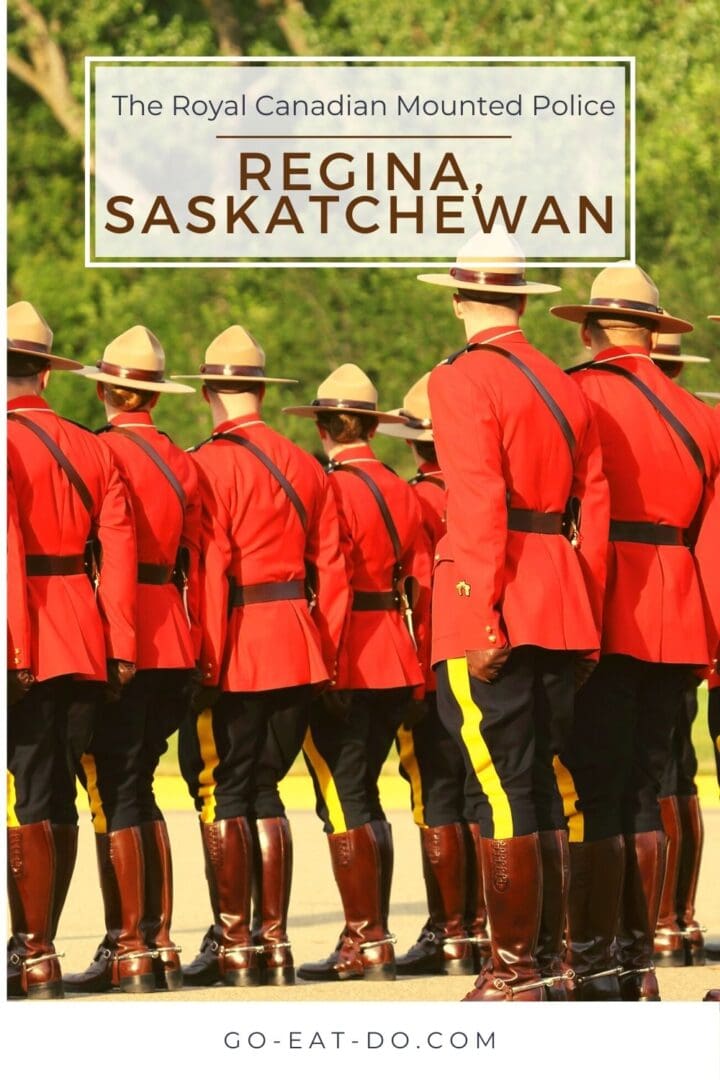Stuart Forster heads to Regina, Saskatchewan, visiting the Royal Canadian Mounted Police Heritage Centre and RCMP Sunset Retreat Ceremony to look into the heritage and history of the RCMP, the police force known as Mounties.
Disclosure: Some of the links below and banners are affiliate links, meaning, at no additional cost to you, I will earn a commission if you click through and make a purchase.
The Royal Canadian Mounted Police (RCMP) is an iconic institution. Mounties dressed in their red serge parade uniforms are seen as symbols of Canada. They are also members of a police force using modern methods to maintain law and order in a country that their predecessors helped forge.
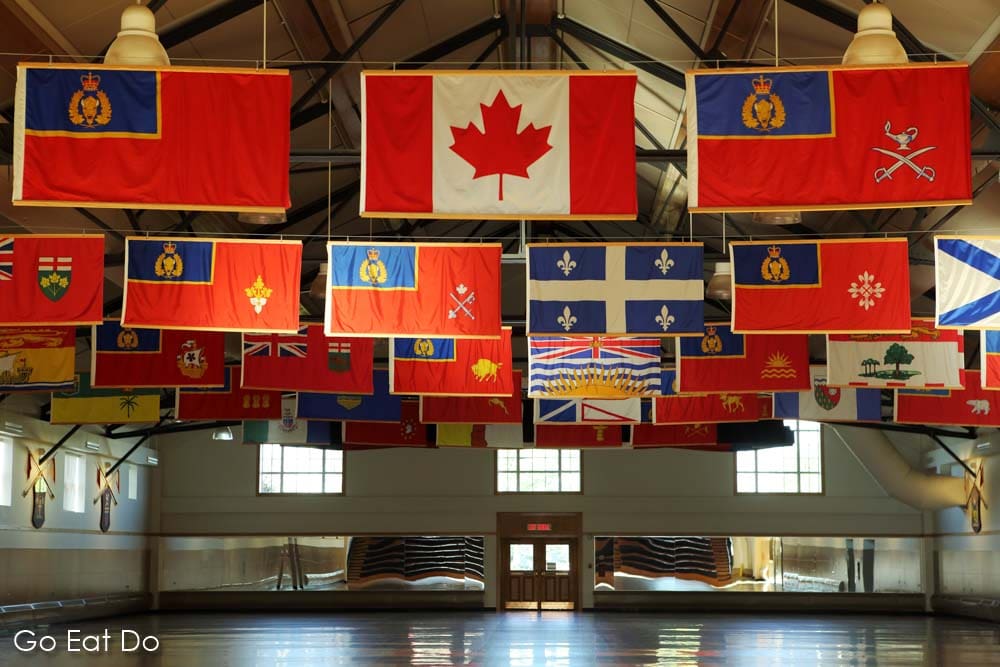
The North-West Mounted Police
The Mounties trace their history back to 1873 when the North-West Mounted Police (NWMP) was established.
A report to the government described Canada’s western regions as being “without law, order, or security for life or property.”
It was decided that the lawlessness had to end. Three troops of 50 men were recruited from Ontario, Quebec and Canada’s Maritime provinces.
The force’s current name was adopted on 1 December 1920 when the NWMP and Dominion Police forces merged.
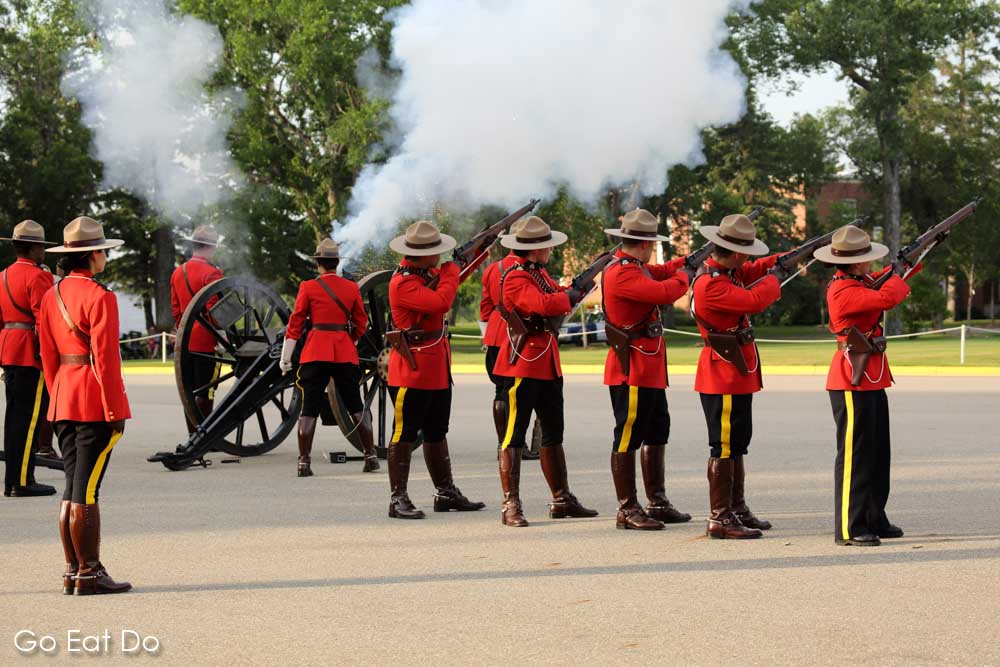
Then, as now, recruits to the force were expected to be of upstanding character.
Recruitment notices promised constables one dollar a day and stated: “Candidates must be active, able-bodied men of thoroughly sound constitution and exemplary character. They should be able to ride well, and to read and write either the English or French language.”
Duties included calming unrest among First Nations people – then known as Indians – who had lost possessions to unscrupulous traders and suppressing illicit whiskey trafficking.

The march out west
The initial march west, under the command of Commissioner George A. French, has entered into Canadian folklore.
On 8 July 1874, the scarlet-clad force set out from Dufferin in Manitoba. They filed through the sparsely settled region with a baggage train that included field guns, agricultural equipment and cattle.
They reached their destination – near modern-day Lethbridge, Alberta – and established Fort Macleod, named after the NWMP’s Assistant Commissioner, James F. Macleod.
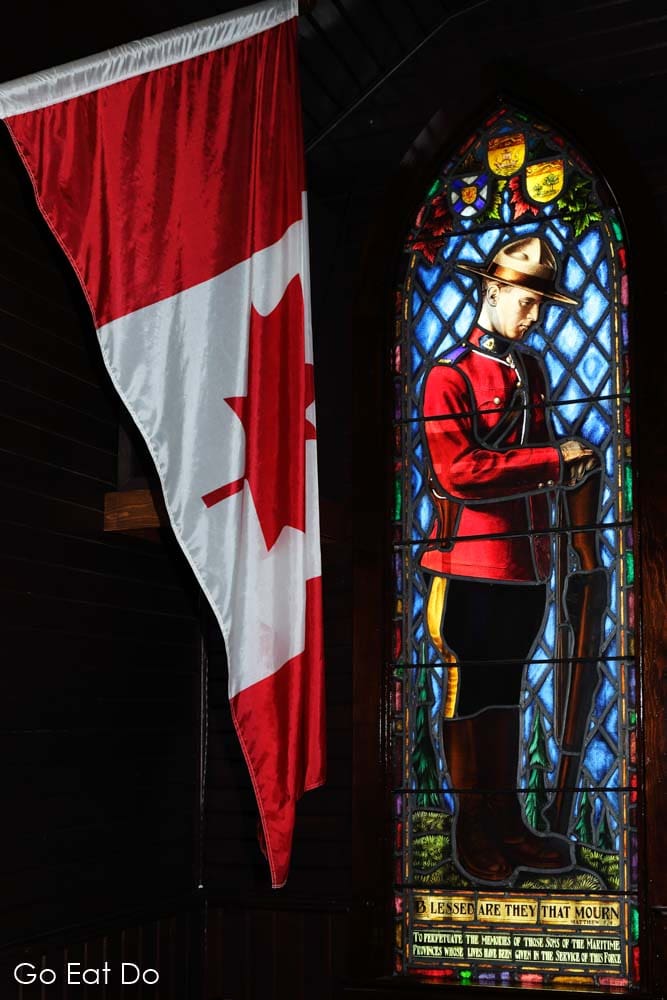
The first outlaws to be brought to justice were four whiskey traders. Remarkably, in the era of the Wild West, no member of the force fired a shot in anger during the first five years of the NWMP’s existence.
In a region with few permanent settlers, the officers won respect by undertaking tasks beyond merely enforcing the law. These included carrying mail, arranging weddings and funerals and helping fight prairie fires. When required, a Mountie could also undertake the duties of a coroner and acted as a Justice of the Peace.
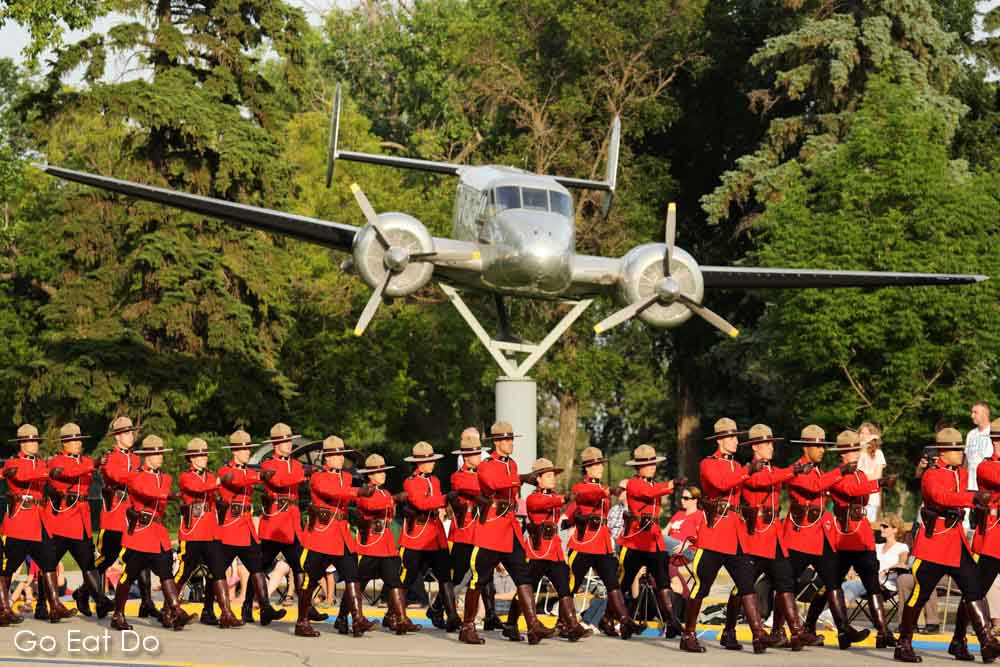
The Blackfoot Treaty of 1877
The red coat became a symbol of authority, honesty and fairness. The NMWP played a key role in pacifying warring tribes and negotiated the Blackfoot Treaty of 1877.
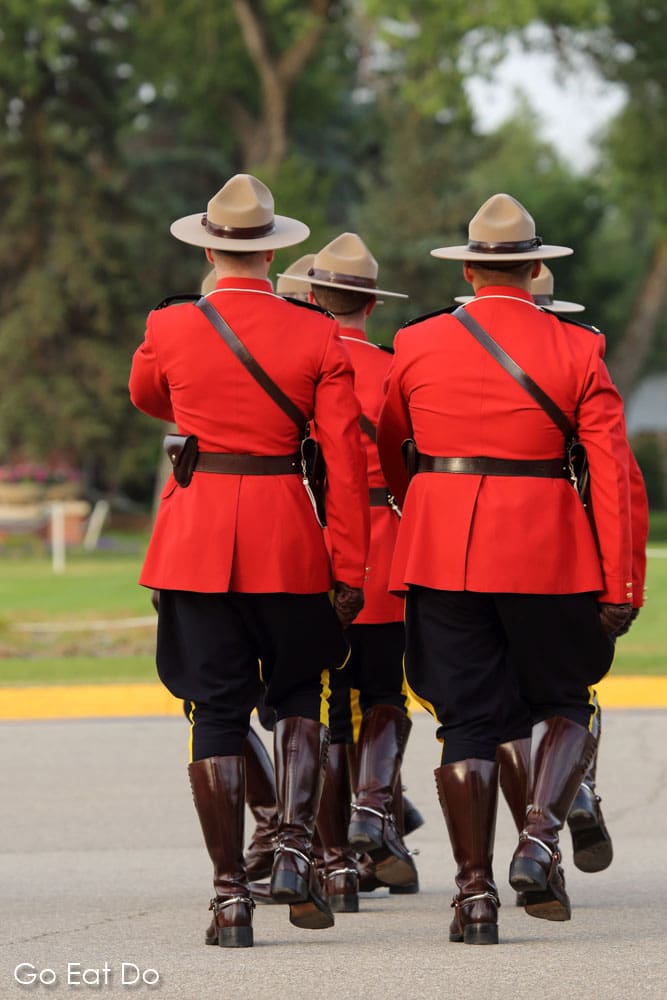
Chief Crowfoot of the Blackfoot Confederacy said; “If the police had not come to this country where would we all be now? Bad men and whiskey were killing us so fast that very few of us would have been left today. The police have protected us as the feathers of the bird protect it from the frosts of winter.”
Today the RCMP has more than 30,000 employees. It has the largest jurisdiction of any police force in the world, stretching 5,240 kilometres (3,256 miles) from the Atlantic to the Pacific Oceans and 4,828 kilometres (3,000 miles) from Canada’s border with the United States of America up into the Arctic.
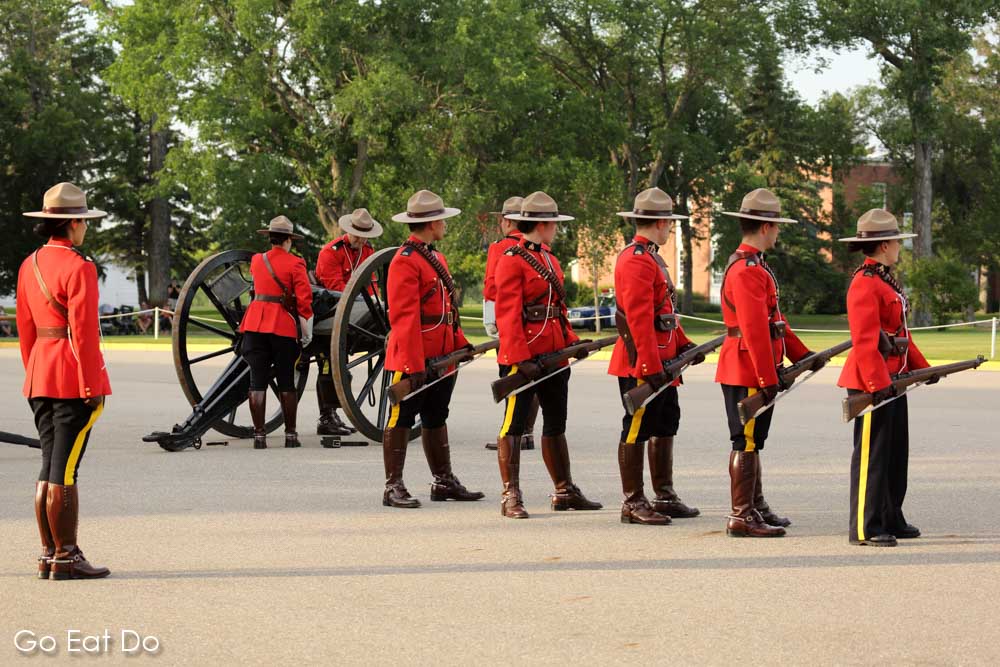
Royal patronage and exploration
In 1903, the year prior to King Edward VII bestowing royal patronage, the NWMP established its first post within the Arctic Circle. The post on Herschel Island was set up to stop whalers from harming Inuit people.
Under the command of Sergeant Henry Larsen Mounties became pioneering navigators. In 1940, the RCMP schooner St Roch became the first vessel to navigate the North-West Passage from west to east. That was achieved while on patrol and delivering supplies to isolated northern police stations.
Thanks to such deeds and the influence of Hollywood, the reputation of RCMP grew internationally.
Many people falsely assume that the force’s motto is ‘a Mountie always get his man’. The RCMP motto is maintiens le droit, meaning ‘maintain the right’.
Television and movies also tend to convey the idea that officers their red uniforms and Stetson hats for everyday duties. That isn’t the case; these are now parade dress. When you’re on the streets of Canada you’ll see members of the RCMP on patrol wearing blue uniforms.
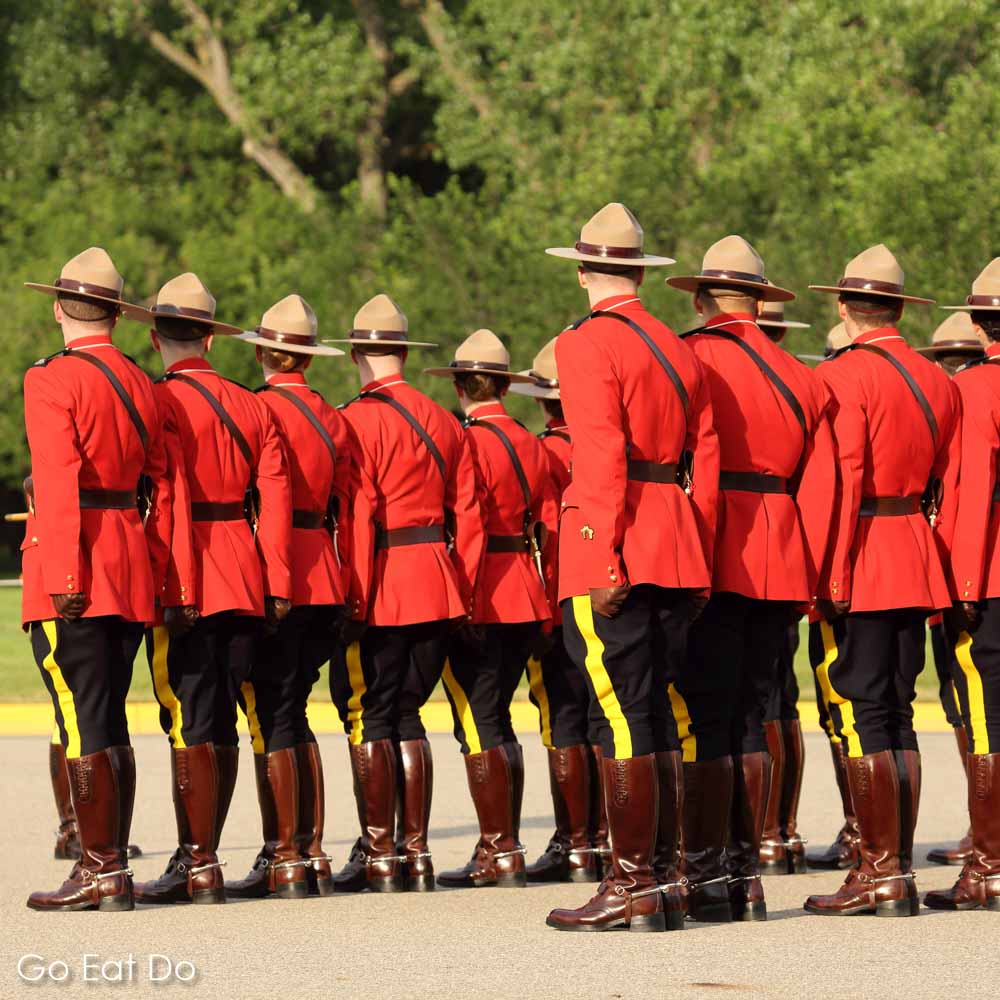
Values of honour and integrity
Honour and integrity – values emphasised in screen depictions of Mounties – do play an important role in the RCMP creed. The principles of justice, mercy and truth are reinforced during the training of members of the force.
Today every member of the Royal Canadian Mounted Police begins their career with a 24-week basic training programme at the RCMP Academy. Known as a Depot Division, the base in Regina, Saskatchewan, was established in 1885 along the lines of the Royal Irish Constabulary’s Depot of Instruction.
Around 14 per cent of recruits drop out of the course. The training is offered in English and French.
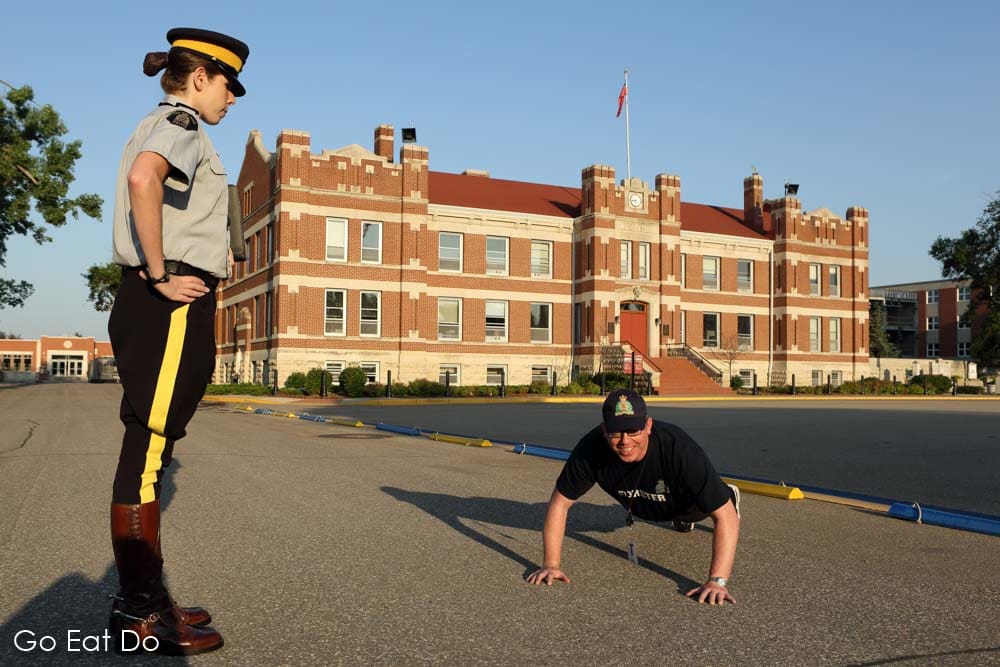
Approximately 12 per cent of the RCMP’s regular members identify as being from ethnic minority groups. In 1990 Baltej Singh Dhillon, a Sikh, was permitted to wear a turban rather than a Stetson.
The first female members of the RCMP graduated in 1975.

The Sunset Retreat Ceremony
On Tuesday evenings during summertime visitors are permitted into Depot Division to watch the weekly Sunset Retreat Ceremony. Visitors can watch trainees and members of the RCMP drill and march in formation while bands perform.
As the sun begins to set the Canadian flag is ceremonially lowered.

The RCMP Heritage Centre in Regina
The adjacent RCMP Heritage Centre is open throughout the year. The centre tells the story of the force.
Visitors can see early uniforms, learn about the RCMP’s diverse roles and read about episodes from its history. Artefacts on show include the Sioux chief Sitting Bull’s rifle case, medals and vehicles.
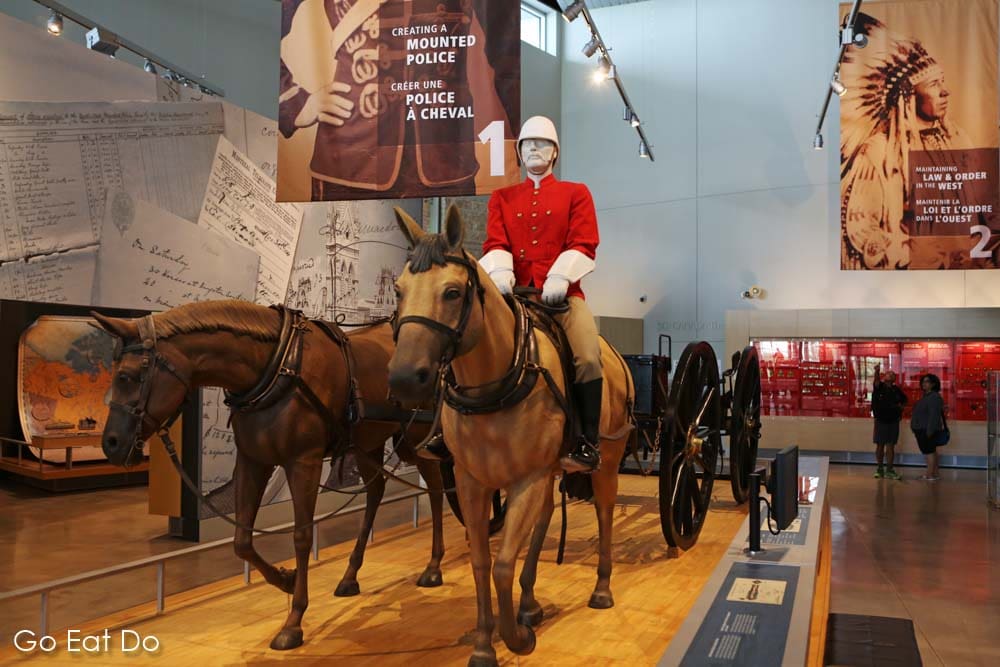
The RCMP served in South Africa during the Boer War from 1899 to 1902. It was also posted to the Western Front and Siberia during World War One (1914-1918).
The RCMP has evolved into a modern police force. Visiting the RCMP Heritage Centre illustrates how its traditions and values reflect those at the core of Canadian society.
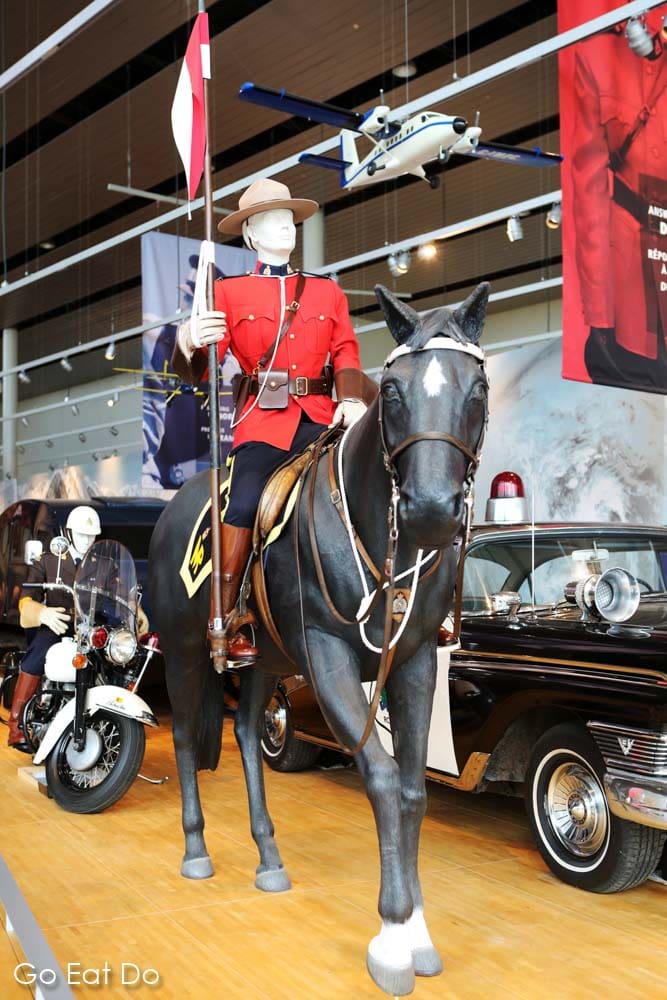
Map showing the RCMP Heritage Centre
The map below shows the location of the Royal Canadian Mounted Police Heritage Centre in Regina, Saskatchewan:
Hotels in Regina, Saskatchewan
Looking for accommodation in Saskatchewan? Search for hotels in Regina and elsewhere in the province via the Booking.com website:
Booking.com
Books about the RCMP and Canada
Visiting Regina or interested in the Royal Canadian Mounted Police? You may find these books interesting:
Red Serge and Polar Bear Pants: The Biography of Harry Stallworthy:


Scarlet Tunic: Inside Our Cars – Inside Our Hearts: On Patrol with the Royal Canadian Mounted Police:




Further information
See the Tourism Saskatchewan and Destination Canada websites for more information about visiting Saskatchewan, Canada.
Learn more about the Royal Canadian Mounted Police on the RCMP website. The RCMP Heritage Centre website has practical information about visiting, including opening times, admission prices and details about exhibitions.
Stuart Forster, the author of this post, is an award-winning travel writer. Canada is one of Stuart’s areas of expertise. He was named the winner of the 2017 British Annual Canada Travel Award (BACTA) for Best Online Content.
Thank you for visiting Go Eat Do and reading this post about the Royal Canadian Mounted Police? You may enjoy these posts about Exploring Saskatchewan and horse-riding at La Reata Ranch.
Photos illustrating this post are by Why Eye Photography.
If you enjoyed this post why not sign up for the free Go Eat Do newsletter? It’s a hassle-free way of getting links to posts on a monthly basis.
‘Like’ the Go Eat Do Facebook page to see more photos and content.
A version of this post was originally published on Go Eat Do on 27 April 2015.
